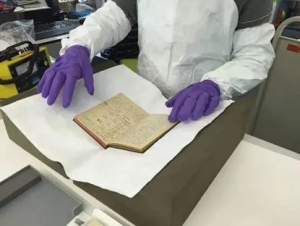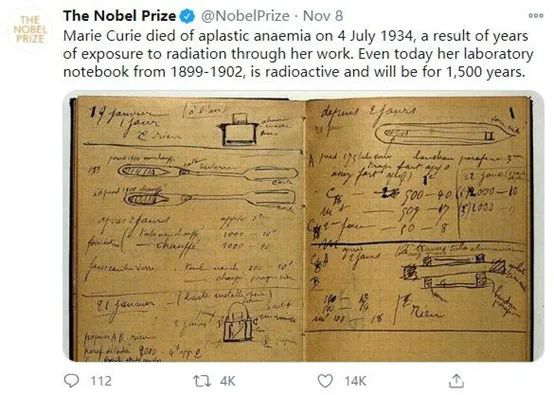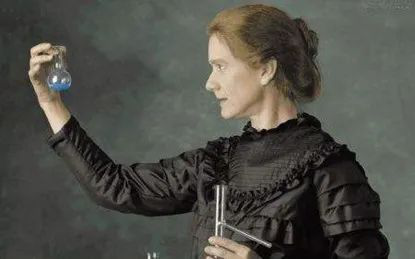
Madame Curie died of aplastic anemia in 1934, It has to do with her lifetime of exposure to radiation. The notebook mentioned in the Nobel Prize official Twitter this time was used by Marie Curie in the laboratory from 1899 to 1902. The radioactivity of this notebook is still very powerful. After calculation and analysis by scientists, the radioactivity of this notebook will continue for 1,500 years.

Madame Curie was born in Poland and came to France at the age of 24 to study in the physics department of the Faculty of Science of the University of Paris. At the age of 28, Mrs. Curie became a teacher in an ordinary girls’ middle school. But she was not content to spend her whole life just caring for her husband and children, and a middle school teacher. A year later, with the support of Schuzenberg, the principal of the School of Physics and Chemistry, Mrs. Curie obtained a position in the physics laboratory of the school, and since then started scientific experiments with her husband.
In July 1898, the Curies presented a research paper “On a New Radioactive Substance in Bituminous Uranium” to the Academy of Sciences, stating the discovery of a new radioactive element No. 84, which is four hundred times more radioactive than uranium. Madame Curie proposed to name this new element after her native Poland, and it was eventually named Polonium. Since then, the Curies established a set of the earliest radiochemical working methods.

Only a few months later, the Curies and their colleague Baymont once again presented to the Academy of Sciences “On the New Material with High Radioactivity in Bituminous Uranium Ore”, indicating the discovery of the new radioactive element 88, which was nearly a million times more radioactive than uranium and was later named Radium.
In the next few years, the Curies separated a decigram of radium chloride (RaCl2) from several tons of residue, measured the atomic weight of radium to be 225, and later updated the exact amount to 226. The following year, in 1903, the Curies and Becquerel won the Nobel Prize in Physics. In 1911, Madame Curie won the Nobel Prize in Chemistry for separating pure metal radium.

After the unfortunate death of her husband Pierre Curie in a car accident in 1906, Madame Curie endured psychological grief and physical torture. She stayed on the front line of scientific exploration for nearly 20 years and became the first in the world. A person who has won the Nobel Prize twice.
Nowadays, our protective equipment and environment for chemical experiments are much better than Madame Curie a hundred years ago. Regardless of her own health, Madame Curie spent her life on the front line of radiological research, and died of a serious illness. The current experimental conditions, equipment, and environment are getting better and better and more advanced. We should carry forward and pass on Madam Curie’s perseverance in dealing with scientific research, and carry forward and pass on it for the eternal development of human science to Climb the peak!
Comments